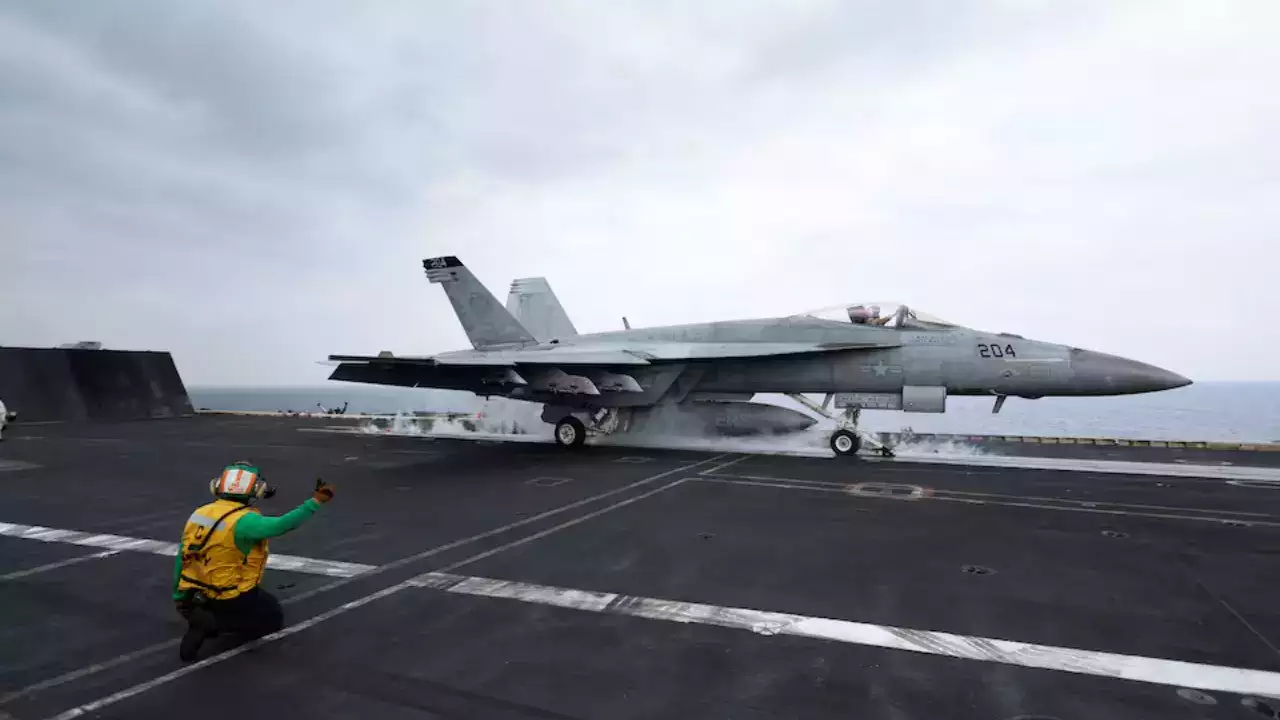The United States is deploying additional warships and fighter jets to the Middle East to bolster Israel‘s defences against potential threats from Iran and its proxies, the Pentagon announced.
Tensions have escalated in the region following the assassination of Hamas leader Ismail Haniyeh in Iran and a key Hezbollah commander in Lebanon. In response, the US has placed missile defence forces on heightened alert and reaffirmed its “ironclad” commitment to Israel’s security.
Ayatollah Khamenei, Iran’s supreme leader, has vowed “harsh punishment” against Israel for Haniyeh’s killing and declared three days of national mourning.Haniyeh, 62, was killed in Tehran on Wednesday. Both Iran and Hamas blame Israel for the attack, although Israel has not commented on the matter.
The Pentagon’s statement highlighted that the new deployments are intended to “improve US force protection, increase support for the defence of Israel, and ensure the US is prepared to respond to various contingencies”, according to Reuters. This will include additional ballistic missile defence-capable cruisers and destroyers.
John Kirby, the strategic communications coordinator for the National security council, told CNN, “We’ve heard the Supreme Leader loud and clear that he intends to avenge this killing of a Hamas leader in Tehran, and that they want to conduct another attack on Israel. We can’t just assume that we are also potentially going to be victims of that kind of an attack, so we’ve got to make sure we’ve got the right resources and capabilities in the region.”
In addition to some 80 land-based combat aircraft, the Pentagon has already deployed more than a dozen warships in the region. According to New York Times, the aircraft carrier Theodore Roosevelt, equipped with about 40 F/A-18 Super Hornet and F-35 attack planes, is now steaming near the Arabian Gulf, while the USS Wasp amphibious ready group, with 30 airplanes and helicopters as well as 4,500 Marines and sailors, is operating in the eastern Mediterranean Sea.
The Pentagon’s spokesperson, Sabrina Singh, remarked that the US does not believe escalation is inevitable. “We are being very direct in our messaging that we don’t want to see heightened tensions and believe there is an off-ramp here, which is that ceasefire deal,” Singh said, as per Reuters.
Meanwhile, Israeli Prime Minister Benjamin Netanyahu has warned of “challenging days ahead” and assured the nation that Israel is “prepared for any scenario.” He mentioned the recent “crushing blows” delivered to Israel’s enemies, including the killing of Fuad Shukr, a top Hezbollah military commander, in Beirut.
An Israeli delegation is set to travel to Cairo in the coming days to negotiate a Gaza ceasefire and a potential hostage release deal.
This comes after Hamas sparked the current conflict with its October 7 attack on Israel, which resulted in 1,200 deaths. Israel’s ongoing military operation in Gaza has since led to nearly 40,000 fatalities, according to the Hamas-run health ministry.
Tensions have escalated in the region following the assassination of Hamas leader Ismail Haniyeh in Iran and a key Hezbollah commander in Lebanon. In response, the US has placed missile defence forces on heightened alert and reaffirmed its “ironclad” commitment to Israel’s security.
Ayatollah Khamenei, Iran’s supreme leader, has vowed “harsh punishment” against Israel for Haniyeh’s killing and declared three days of national mourning.Haniyeh, 62, was killed in Tehran on Wednesday. Both Iran and Hamas blame Israel for the attack, although Israel has not commented on the matter.
The Pentagon’s statement highlighted that the new deployments are intended to “improve US force protection, increase support for the defence of Israel, and ensure the US is prepared to respond to various contingencies”, according to Reuters. This will include additional ballistic missile defence-capable cruisers and destroyers.
John Kirby, the strategic communications coordinator for the National security council, told CNN, “We’ve heard the Supreme Leader loud and clear that he intends to avenge this killing of a Hamas leader in Tehran, and that they want to conduct another attack on Israel. We can’t just assume that we are also potentially going to be victims of that kind of an attack, so we’ve got to make sure we’ve got the right resources and capabilities in the region.”
In addition to some 80 land-based combat aircraft, the Pentagon has already deployed more than a dozen warships in the region. According to New York Times, the aircraft carrier Theodore Roosevelt, equipped with about 40 F/A-18 Super Hornet and F-35 attack planes, is now steaming near the Arabian Gulf, while the USS Wasp amphibious ready group, with 30 airplanes and helicopters as well as 4,500 Marines and sailors, is operating in the eastern Mediterranean Sea.
The Pentagon’s spokesperson, Sabrina Singh, remarked that the US does not believe escalation is inevitable. “We are being very direct in our messaging that we don’t want to see heightened tensions and believe there is an off-ramp here, which is that ceasefire deal,” Singh said, as per Reuters.
Meanwhile, Israeli Prime Minister Benjamin Netanyahu has warned of “challenging days ahead” and assured the nation that Israel is “prepared for any scenario.” He mentioned the recent “crushing blows” delivered to Israel’s enemies, including the killing of Fuad Shukr, a top Hezbollah military commander, in Beirut.
An Israeli delegation is set to travel to Cairo in the coming days to negotiate a Gaza ceasefire and a potential hostage release deal.
This comes after Hamas sparked the current conflict with its October 7 attack on Israel, which resulted in 1,200 deaths. Israel’s ongoing military operation in Gaza has since led to nearly 40,000 fatalities, according to the Hamas-run health ministry.
Source : Times of India






